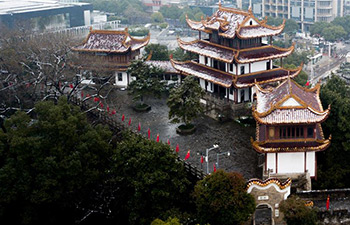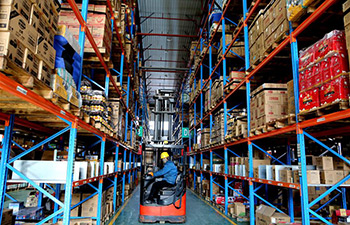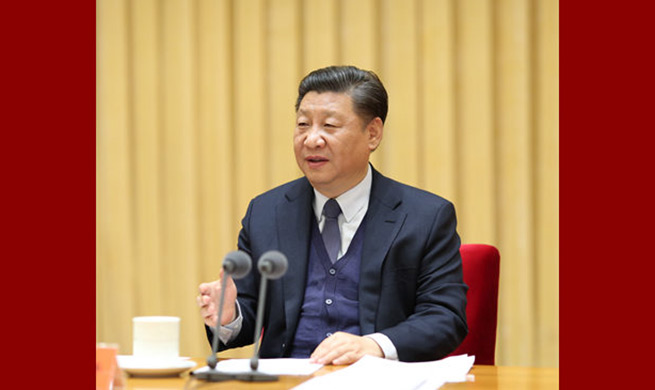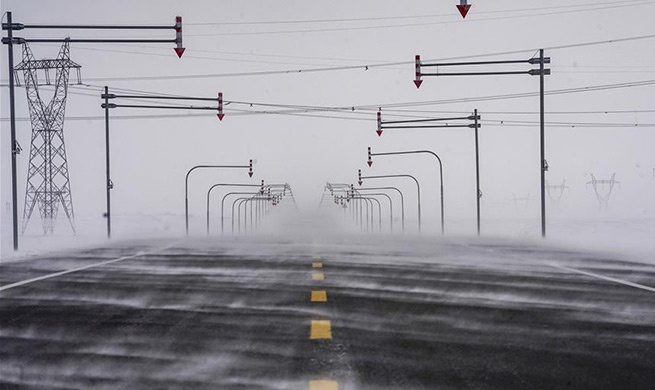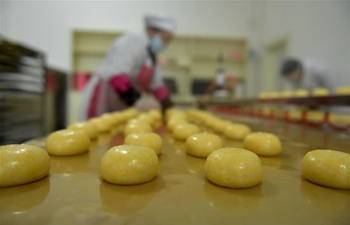By Tao Jun, Nguyen Xuan
HANOI, Jan. 16 (Xinhua) -- Property and stock markets seem to be the most promising investment destination in Vietnam this year to pour money into, analysts have said.
The high expectation on the country's macro-economy development prospect also expands confidence in investment channels. Vietnam reported a gross domestic product (GDP) growth of 7.08 percent in 2018, the highest level in 11 years, and will maintain it at 7 percent in 2019, estimated Vietnam's National Financial Supervision Commission (NFSC).
Emerging as a thriving and fast-growing market in Southeast Asia, property market is among the most-favored channels in Vietnam last year by foreigners, said local experts.
In 2018, real estate lured nearly 6.6 billion U.S. dollars in foreign investment into the field, doubling from the same period last year and accounting for 18.6 percent of Vietnam's total foreign investment.
Inventories also sank to a low point of 1 billion U.S. dollars as of November 2018, down from the peak 105.6 billion U.S. dollars in the first quarter of 2013, according to the Vietnam Real Estate Association.
Business insiders hold high hopes on a strong property market in 2019 based on growing domestic demand, relaxed regulations towards foreigners, fast developing coastal cities (mainly due to tourism) along with comparatively low property prices.
Local demand for residential property remains high amid Vietnamese people's quick surge in individual wealth. Vietnam's young population, coupled with rapidly growing middle and affluent class, who for sure love to own things like the majority of Asian, are said to contribute to an increase of new developments and a boost in property prices.
The average house prices in Vietnam are significantly lower than those in China's Hong Kong Special Administrative Region, Singapore, and major cities in China. For example, a luxury apartment in a prime location in Ho Chi Minh City costs around 5,000 U.S. dollars per square meter, while a similar apartment in Singapore or China's Hong Kong can cost four times more.
There has been a sharp rise of overseas investors, especially from China. The globally commercial real estate and investment services firm CBRE has recently announced that Chinese customers accounted for 44 percent of their total transactions in the first nine months of 2018. Earlier, there was a 21-percent increase of Chinese buyers in 2017 compared to 2016.
Moving on to 2019, local experts also forecast that the market will grow with generous supply, and with the industrial real estate segment particularly developed, focusing on large projects.
"We strongly think that the segment still has a lot of room to grow," viewed Nguyen Manh Ha, vice president of the Vietnam Real Estate Association.
Meanwhile, analysts also pointed out factors that may hinder the property market in the coming time, most notably capital shortage and assets overpriced.
Starting from mid-2018, many lenders have increased interest rates and tightened lending for real estate loans due to concerns about bad debts amid land fever in Vietnam.
Earlier last year, the State Bank of Vietnam lowered the cap, allowing commercial banks to lend up to 40 percent of short-term mobilization funds for long-term loans, instead of 60 percent in the past, given real estate loans are usually long-term ones.
Can Van Luc, chief economist at the Bank for Investment and Development of Vietnam, nevertheless, expressed a positive view on the issue. "Many enterprises have actively issued bonds to lessen their dependency on the credit system in times of capital shortage. And this is a good sign."
In 2018, the Vietnamese stock market has also been a favored investment channel of local and foreign investors. According to NFSC, its scale, or market capitalization, grew tremendously to as large as 75 percent of the country's GDP, compared to 70.2 percent at the end of 2017.
Last year, Vietnam is the only stock market in Southeast Asia that could draw foreign investment. Foreign investors remained net buyers of some 1.9 billion U.S. dollars, and their total portfolio reached 35.3 billion U.S. dollars, up 8.9 percent against 2017, according to NFSC statistics.
Although the benchmark VN-Index dropped 9.3 percent against Dec. 2017, but it is expected to rise to 1,049 by the end of December this year, implying an 18 percent advance for 2019, according to the average estimate of nine analysts, investors and strategists compiled by Bloomberg News.
In 2017, VN-Index climbed 39 percent against 2016, reclaiming crown of Asia's best performing stock market and ranking among world's top five.
In 2019, many factors, including macro-economic stability, high GDP growth rate, firms' profit expansion and a possible status upgrade to "emerging market" from "frontier market" will continue to fuel the stock market and maintain the cash inflow at a high level.
However, investors are advised to take into account possible negative movements, which may cause the key indices to fluctuate wildly by 300-350 points, said Vietcombank Securities Company. The movements include possible interest rate hikes by the U.S. Federal Reserves, which have shattered dealers' confidence several times last year, lower global growth caused by global trade frictions and other external factors.
Besides, some analysts assumed that the banking group, one of the three largest sectors with respect to market capitalization and profit, may witness deceleration in 2019 with after-tax profit growth of 13-15 percent, compared to impressive rates in previous years, at about 40 percent in 2018 and 52.3 percent in 2017.
